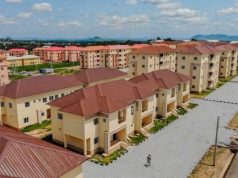From Our Housing Stand (156)
Adapting to Modern Demands
The real estate market is undergoing a transformative phase, influenced by shifts in consumer preferences, technological advancements, and broader economic trends.
As we navigate this evolving landscape, it is essential for stakeholders developers, investors, and buyers alike to adapt to these changes to maximize opportunities and mitigate risks.
One of the most significant trends shaping the real estate sector is the increasing demand for sustainable and energy-efficient properties. Today’s buyers are more environmentally conscious, seeking homes that not only meet their aesthetic desires but also align with their values. This shift has prompted developers to incorporate green technologies, such as solar panels and energy-efficient appliances, into their projects. Properties that prioritize sustainability are not only more attractive to potential buyers but often enjoy higher resale values and lower operating costs.
Technological innovations are also redefining the way we buy, sell, and manage real estate. The rise of virtual tours, augmented reality, and AI-driven analytics has made property hunting more accessible and efficient. Buyers can now explore homes from the comfort of their couches, and realtors can leverage data to provide tailored experiences. As these technologies continue to evolve, staying ahead of the curve will be crucial for real estate professionals aiming to enhance client satisfaction and streamline operations.
Moreover, the pandemic has reshaped our understanding of space and functionality. With remote work becoming a standard for many, the demand for homes that accommodate home offices and flexible living spaces has surged. Buyers are prioritizing properties with additional rooms, outdoor spaces, and proximity to nature. This trend has led to a revitalization of suburban and rural areas, where many seek a balance between work and quality of life.
As we look to the future, it is vital to remain aware of the economic factors influencing the real estate market. Rising interest rates, inflation, and changing demographics are all critical elements that can impact property values and buyer behavior. For instance, as interest rates rise, affordability becomes a pressing concern for many potential homeowners, which may lead to a slowdown in the market. Understanding these dynamics will empower investors and developers to make informed decisions.
In conclusion, the real estate market is at a crossroads, presenting both challenges and opportunities. By embracing sustainability, leveraging technology, and adapting to changing consumer needs, stakeholders can position themselves for success in this dynamic environment. As we move forward, a proactive approach will be essential for navigating the complexities of the modern real estate landscape. The future is bright for those willing to innovate and respond to the evolving demands of the market.



